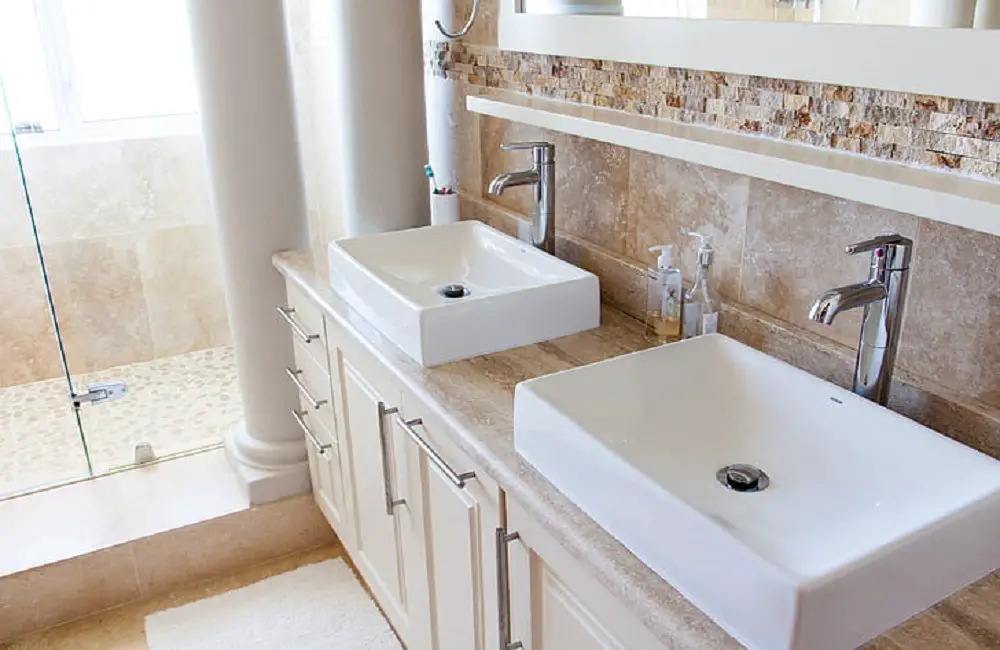Have you ever noticed that the sound of your voice in the bathroom is different from that of other rooms in your house? Maybe you’ve noticed how oddly sound seems to reverberate, producing an echo that amplifies even the tiniest sounds.
This phenomena is the result of an intriguing interaction between physics, acoustics, and architectural design rather than just a peculiar bathroom feature. This essay will examine the actual causes of bathroom echoing and delve into the scientific theories behind this common occurrence.
The Basics of Sound and Echo
Understanding the fundamentals of sound is necessary before attempting to comprehend why bathrooms echo. Vibrations that result in pressure differences cause waves to flow through the atmosphere and produce sound.
These sound waves can be transmitted, reflected, or absorbed when they come into contact with surfaces. When sound waves reverberate off a surface and return to the listener’s ear after a discernible delay, it is called an echo. Usually, this delay occurs because sound waves have to travel a longer distance before they are reflected back.
Acoustics and Reflection
The main cause of bathroom echoing is the special acoustics of the space. The study of sound, especially how it reacts to various settings, is known as acoustics. Bathroom acoustics are unique due to a number of factors:
- Hard Surfaces: Hard, non-porous surfaces such tiles, glass, mirrors, and porcelain fixtures are frequently seen in bathrooms. Instead of absorbing sound waves, these materials effectively reflect them. Softer materials in other rooms, such as upholstered furniture, rugs, and drapes, absorb sound and lessen echoes.
- Small, Enclosed Space: In a house, bathrooms are often smaller than other rooms. The shorter the distance sound waves must travel before hitting a surface and bouncing back, the smaller the space. This closeness makes it more likely that sound waves will reflect back to the source several times in a brief amount of time, intensifying the echo.
- Lack of Absorptive Materials: There’s a noticeable lack of sound-absorbing materials in most bathrooms. Bath mats and towels, for example, have the ability to absorb some sound, but usually not enough to offset the reflecting surfaces. The echo effect is exacerbated by this lack of absorption.
The Role of Resonance
Another important factor in bathroom acoustics is resonance. A room’s inherent frequency and certain sound waves combine to produce resonance, which amplifies the sound. Because of their small size and homogeneous, hard surfaces, bathrooms frequently provide the perfect environment for resonance.
Certain frequencies, especially those associated with human speech, may sound louder and longer as a result of this amplification, intensifying the echo effect.
The Impact of Design and Fixtures
A bathroom’s acoustic qualities are greatly influenced by its layout and design. The way that sound waves travel and reflect can be influenced by various elements, including the placement of fixtures, the height of the ceiling, and the existence of niches and corners. For example:
- Flat, Parallel Surfaces: The walls and ceilings of bathrooms are frequently flat, parallel surfaces, which can cause sound waves to reverberate. Certain frequencies are increased as a result of this recurrent reflection, which can cause standing waves and add to the echo.
- Curved and Angled Surfaces: Certain surfaces in contemporary bathrooms are angled or curved, which can scatter sound waves in various directions. This can lessen direct reflections, but it can also result in intricate patterns of reflection that add to the overall echo.
- Fixtures and Fittings: The intricacy of sound reflections is increased by the presence of different fixtures, including sinks, toilets, and bathtubs. By adding more surfaces for sound waves to bounce off, these fixtures can intensify the echo effect even more.
Human Perception and Psychoacoustics
Psychoacoustics is the study of how our perception of sound combines psychological and physical elements. The human ear and brain are highly skilled at processing and differentiating sounds, including echoes.
The mix of restricted spaces and reflecting surfaces in bathrooms distorts our perception of sound. Because of this changed perception, even commonplace sounds—like footsteps or flowing water—can appear louder and more distinct.
Practical Implications
Understanding why bathrooms echo can have practical implications for both everyday life and specific applications. For instance:
- Improving Bathroom Acoustics: There are a few things you may do to lessen the irritating echo in your bathroom. Soft furnishings like carpets, towels, and even acoustic panels can be used to absorb sound and lessen echo. Furthermore, sound waves can be dispersed and reflections reduced by using design elements that break up flat surfaces, such as textured tiles or artistic accents.
- Recording and Broadcasting: Broadcasters and musicians have taken notice of the distinct acoustics of toilets. In vocal recordings, the natural reverb effect that is produced by the echo and resonance is frequently desired. Some podcasters and artists purposefully record in bathrooms to benefit from these acoustic qualities.
- Privacy Considerations: However, there may be privacy issues with the improved sound projection in toilets. It’s easy to hear noises and conversations outside the restroom, which could be annoying in some circumstances. Designing more private toilet spaces—perhaps by using soundproofing measures—can be aided by an understanding of the acoustic dynamics.
Conclusion
The interaction of acoustics, material characteristics, and human perception in restrooms creates an intriguing echo.
Greater reverberation results from the hard, reflecting surfaces, small size, and lack of sound-absorbing materials that produce an atmosphere where sound waves bounce about more freely.
We may appreciate the special qualities of bathroom acoustics and use this information to improve our living spaces by knowing the science behind this occurrence.
The fundamentals of sound and acoustics give important insights into this common phenomenon, whether your goal is to lessen echo for a quieter bathroom experience or to use its qualities for artistic purposes.

